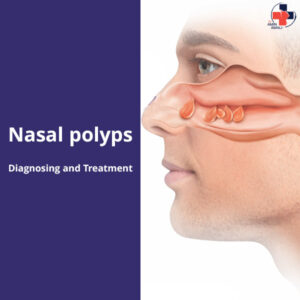In a world that celebrates diversity, each individual possesses unique features that contribute to their overall beauty. However, certain physical attributes can sometimes lead to self-consciousness or dissatisfaction with one’s appearance. Otoplasty, a surgical procedure aimed at reshaping the ears, has emerged as a solution for individuals seeking to enhance their confidence and achieve aesthetic harmony. In this article, we will delve into the details of otoplasty, exploring its purpose, procedure, recovery, potential risks, and the transformative impact it can have on one’s self-esteem.

Understanding Otoplasty
Otoplasty, often referred to as ear pinning surgery, is a cosmetic procedure performed to alter the shape, size, or position of the ears. It is commonly sought by individuals who are unhappy with the appearance of their ears due to factors such as protrusion, asymmetry, or deformities present at birth. By reshaping the cartilage and adjusting the contours of the ear, otoplasty aims to bring balance and proportion to the face while preserving natural-looking results.
What are otoplasty benefits ?
Otoplasty, also known as ear surgery or cosmetic ear reshaping, offers several benefits. Here are a few:
- Enhanced self-confidence: Otoplasty can address concerns related to the shape, size, or position of the ears, leading to improved self-esteem and a more positive self-image.
- Corrects prominent or protruding ears: Otoplasty can be used to correct ears that stick out prominently from the head, bringing them closer to the natural contour of the head.
- Reshapes misshapen or deformed ears: Otoplasty can correct various ear abnormalities, such as misshapen lobes, constricted ear, or overly large ears, resulting in a more balanced appearance.
- Corrects asymmetry: The procedure can address issues of ear asymmetry, bringing balance and symmetry to the overall facial features.
- Psychological and emotional well-being: By improving the appearance of the ears, otoplasty can alleviate feelings of self-consciousness, bullying, or social discomfort, thereby promoting psychological and emotional well-being.
It’s important to consult with a qualified plastic surgeon to discuss your specific concerns and expectations regarding otoplasty.
How to get ready before otoplasty ?
Here are some general guidelines to help you prepare for otoplasty, but please remember to follow your surgeon’s specific instructions as every case can be different:
Consultation:
Schedule a consultation with your surgeon to discuss your goals, medical history, and any concerns you may have. They will assess your suitability for the procedure.
Choose a skilled surgeon:
Research and select a qualified plastic surgeon who specializes in otoplasty to ensure you receive proper care and achieve desired results.
Follow pre-operative instructions:
Your surgeon will provide you with pre-operative instructions, which may include guidelines regarding eating, drinking, smoking, and specific medication to avoid or take prior to surgery. It’s important to adhere to these instructions for a successful procedure.
Arrange transportation:
Otoplasty is usually performed as an outpatient procedure, meaning you can go home on the same day. However, since you may feel groggy or experience temporary dizziness after surgery, it’s crucial to arrange for someone to drive you home safely.
Arrange for support:
Plan to have someone stay with you for the first 24 hours following the procedure to assist with daily activities, as you may experience discomfort and restricted movement.
Prepare your recovery space:
Set up a comfortable recovery space at home, including soft pillows, remote controls, entertainment options, and any necessary supplies recommended by your surgeon, such as bandages or cool compresses.
Stock up on supplies:
Prior to the surgery, purchase any prescribed medications, such as pain relievers or antibiotics, as well as any recommended post-operative care products, such as saline solution or gentle cleansers.
Avoid blood-thinning substances:
In the days leading up to your surgery, avoid substances that can thin your blood, such as aspirin, herbal supplements, and certain medications. These might increase the risk of bleeding and bruising.
Remember, these are general guidelines, and it’s essential to consult with your surgeon for personalized advice and instructions tailored to your specific case. Good luck with your otoplasty!
Procedure
Before undergoing otoplasty, individuals typically consult with a qualified plastic surgeon to discuss their concerns, expectations, and desired outcome. During the procedure, the surgeon makes an incision behind the ear, allowing access to the cartilage for reshaping. Depending on the specific goals of the surgery, the surgeon may remove excess cartilage, reposition the ear closer to the head, or create folds to enhance symmetry. Once the desired corrections have been made, the incisions are closed with sutures, and the ears are bandaged for protection and support during the healing process.
Recovery timeline
After otoplasty, it is important to follow the surgeon’s instructions carefully to ensure proper healing and minimize potential risks. The initial recovery period typically involves wearing a protective wrap or headband over the ears to maintain their new shape and protect them from accidental trauma. Patients may experience mild discomfort, swelling, and bruising, which can be managed with prescribed pain medication and cold compresses. It is advisable to avoid strenuous activities and contact sports during the recovery period to prevent any damage to the ears. Most individuals can resume their normal routine within a week or two, although complete recovery may take several months.
Potential Risks and Complications
As with any surgical procedure, otoplasty carries some risks and potential complications. These may include infection, bleeding, hematoma formation, unfavorable scarring, or asymmetry. However, by choosing a qualified and experienced plastic surgeon, following pre- and post-operative instructions diligently, and maintaining open communication with the surgical team, the chances of encountering such issues can be significantly minimized.
Conclusion
Otoplasty stands as a viable option for individuals seeking to enhance their appearance and improve their self-confidence through ear reshaping. By addressing concerns related to protrusion, asymmetry, or deformities, this surgical procedure offers a transformative experience that can positively impact one’s self-image and overall quality of life. As always, it is crucial to consult with a reputable plastic surgeon and have a comprehensive understanding of the procedure before making a decision. Through otoplasty, individuals can take steps towards achieving aesthetic harmony and embracing their individuality with confidence.












